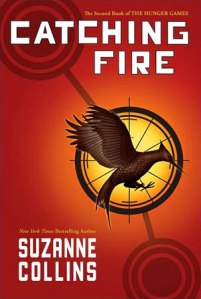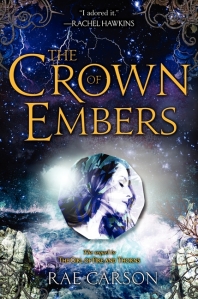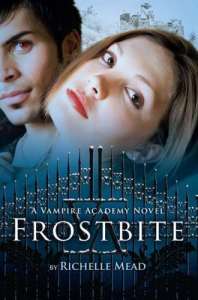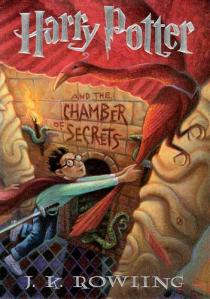Those of us who read can relate times when we’ve been disappointed by sequels.
I’m afraid I can’t get into specific examples of bad sequels. As a rule, I don’t like to insult other authors—you never know when that can come back around and bite you. But I can point out good examples (see pics above) as well as things to avoid when working on sequels, which is what I aim to do with this post.
Someone once told me that we shouldn’t be disappointed by an author’s sequel. They have creative license. What they envision for the book is how the story should go. Authors can’t write their books “wrong.”
But if that were true, why would editors exist?
The fact of the matter is that authors CAN write their sequels wrong, but oftentimes editors don’t bother to change the big stuff because the first book did so well (I’m sure there are also various other reasons, but for right now we’ll stick with this one). They know the second book will sell well too. But what about the books after that? What happens when an author gets progressively worse because no one will tell them what they’re doing wrong?
First off, the goal is to make each successive book either better or just as good as the last one. As a writer, your books should not be getting worse. And by worse, I don’t mean that bad stuff happens in the book. No, no, no, no. I mean that the quality of your story worsens.
So. Here’s how this works. You write a book. You have a setting. You have a cast of characters. You have a main character or two or five, depending on the norms of your genre. You have a voice, a style, a feel to your book. You’re giving readers a specific experience that only you, as the unique writer that you are, can give them. By writing that first book in a series, here is what you are promising your readers: “Here are how my books work. These are my characters. They have these personalities. You can expect this kind of pacing from me. This is the kind of climax you can expect from me. Here are the kind of subplots I will be doing in this series. You can expect this kind of unique world building in my setting. Etc.”
And when it comes time for a sequel, your writers EXPECT you to give them all the things you promised them in the first one. They want that experience again. They want it to be the same, but different. They want the experiences they had during the first book—the laughing, the crying, the gasping, etc.—but this time with a new story.
Because it’s a perfect example for just about everything, let’s look at Harry Potter to demonstrate this. When JK Rowling wrote that wonderful book Harry Potter and the Sorcerer’s Stone, she showed everyone what incredible things she can do. She demonstrated wonderfully diverse and round characters; multiple mystery subplots; a magical setting; numerous fantastical elements; and themes of friendship, loyalty, and bravery. You can even get into more specifics. You will read about people flying on broomsticks. You’ll see people brandishing wands. You know that the bad guy is not who you first think it is. The characters will cleverly get out of tight situations. They will make you laugh.
I could go on, but you get the point. Rowling makes this all happen in the first book. Then it happens again in Harry Potter and the Chamber of Secrets. All the same things. All the same elements. But does it feel like the same story? No. Completely new story, but you get all the same experiences. And Rowling always makes sure her books are just as good or better than the last one. As a series, we can say that Harry Potter wins.
Let’s look at another good example: Catching Fire by Suzanne Collins. Does she give her readers the same experience in her sequel that she did in The Hunger Games. Yes. Can you find the same elements and themes? The same characters. The same feel. Yes.
Other good examples of sequels include The Girl of Fire and Thorns by Rae Carson and Vampire Academy by Richelle Mead. I don’t want to spend too much time talking about other books because I want to get on to ways that authors can ensure that readers will be satisfied with their sequels. Because believe it or not, there are simple things to do to give your sequel the best chance it can have of being just as good or better than the first book.
First, I need to preface this by saying that just because an author you know did one of the no-nos I’m about to list, that doesn’t mean I don’t like that author or their books. I respect all (well, most) authors because writing is hard no matter what. And even if an author I love did one of these things, I would forgive them. Unless they started doing it consistently. Basically, if you’re a published author reading this, don’t hate me if you’ve done one of these things. It’s not personal. I’m probably still going to upset someone, but whatever. This is all in the interest of making us all better as writers. So you shouldn’t hate me.
The first on the list is pretty simple: don’t change the genre of your book. If your first book is a romance, the sequel should not be horror. You laugh now. You think that no one would actually do this. But I’ve seen it done. Not with romance and horror, but with other genres. If your first book is a “fight to stay alive” kind of thriller, the sequel should not be a mystery. Give readers the same experience. When your book is a mixing of genres, give your readers the same mix of genres in the sequel.
Second and third, don’t replace all your characters or separate all your characters. These two kind of go together, so I’ll talk about them at the same time. If in the first book, you made us all fall in love with one cast of characters, don’t replace them with a new cast. This isn’t to say you can’t kill off characters or introduce new characters. Go ahead. This means you shouldn’t take your character away from all the other fun characters. Don’t have your character spend a whole book in a new country and ignore all your other characters. Bring them along too. Because readers enjoy the interactions between all the characters. They love the conflict that arises between Character A and Character B. They like the way Character C and Character D crack jokes together. They like the romantic tension between Character E and Character F. When you separate even two of the characters, you don’t get that interaction that your readers loved in the first one. You’re giving them a different reading experience.
Fourth, have the same kind of subplots. If you’ve got an incredible mystery subplot in the first one, have another one in the second. If you have an element of adventure in the first one, have it in the second one. If there’s a romance in the first one, have it continue onto the second one.
Because I’m me, I just have to expand on the romance thing for a bit. If your series contains a romantic subplot (and especially if you’re writing YA), then it needs to have the same amount of romantic tension in each succeeding book. If you lose the romantic tension, you’ll often lose the reader too. If you’re writing a series with a huge romantic subplot, the guy and girl cannot get together at the end of the first book. Well they can, but something needs to disturb it at the beginning of the second book then. That tension needs to continue. You need to give readers the same reading experience.
So don’t be a one hit wonder. Be that person who has readers dying to read their next book because they can’t wait to see what awesome thing you’ll do next. Because they know they can expect it from you. Fulfill your promises to the reader. Be like Rowling.



